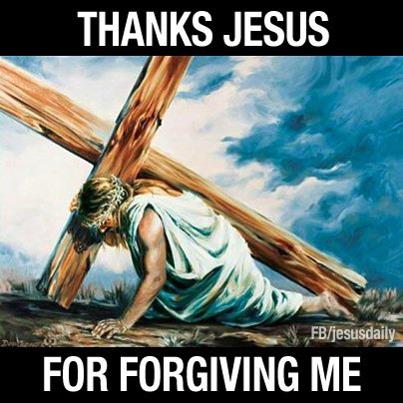Why
Is It Called Good Friday?
Because Good Friday commemorates the crucifixion of Jesus Christ and his death at Calvary.
It also coincides with the Jewish observance of Passover. Back in Moses’s day, the Israelites were instructed to mark the doorposts of their homes with the blood of a slaughtered
spring lamb and, upon seeing this, the spirit of the Lord knew to pass over the first-born in these homes, hence
the name of the holiday.
This passover was symbolic for the coming of the Lord Jesus of Nazareth. He is the sacrificed lamb on who
was crucified on Calvary. Those who believe and accept His sacrifice are covered (body is the Temple of God), by his spiritual
blood for their sins and will be spared at the time of judgement.

The Biblical Account of the Cruxifiction.
According to the accounts
in the Gospels, the Temple Guards, guided by Jesus' disciple Judas Iscariot, arrested Jesus in the Garden of Gethsemane. Judas received money (30 pieces of silver) (Matthew 26:14-16) for betraying Jesus and told the guards that whomever he kisses is the one they are to arrest. Following his arrest, Jesus
was brought to the house of Annas, the father-in-law of the high priest, Caiaphas. There he was interrogated with little result and sent bound to Caiaphas the high priest where the Sanhedrin had assembled (John 18:1-24).
Conflicting testimony against Jesus was brought forth by many witnesses, to which Jesus answered nothing.
Finally the high priest adjured Jesus to respond under solemn oath, saying "I adjure you, by the Living God, to tell
us, are you the Anointed One, the Son of God?" Jesus testified ambiguously, "You have said it, and in time you will
see the Son of Man seated at the right hand of the Almighty, coming on the clouds of Heaven." The high priest condemned
Jesus for blasphemy, and the Sanhedrin concurred with a sentence of death (Matthew 26:57-66). Peter, waiting in the courtyard, also denied Jesus three times to bystanders while the interrogations were proceeding just
as Jesus had predicted.
In the morning,
the whole assembly brought Jesus to the Roman governor Pontius Pilate under charges of subverting the nation, opposing taxes to Caesar, and making himself a king (Luke 23:1-2). Pilate authorized the Jewish leaders to judge Jesus according to their own law and execute sentencing; however, the Jewish
leaders replied that they were not allowed by the Romans to carry out a sentence of death (John 18:31).
Pilate questioned Jesus and told the assembly that there was no basis for sentencing. Upon learning that
Jesus was from Galilee, Pilate referred the case to the ruler of Galilee, King Herod, who was in Jerusalem for the Passover Feast. Herod questioned Jesus but received no answer; Herod sent Jesus back to Pilate. Pilate told the assembly that neither
he nor Herod found guilt in Jesus; Pilate resolved to have Jesus whipped and released (Luke 23:3-16). Under the guidance of the chief priests, the crowd asked for Barabbas, who had been imprisoned for committing murder during an insurrection. Pilate asked what they would have him do with Jesus,
and they demanded, "Crucify him" (Mark 15:6-14). Pilate's wife had seen Jesus in a dream earlier that day, and she forewarned Pilate to "have nothing to do with this righteous man"
(Matthew 27:19). Pilate had Jesus flogged and then brought him out to the crowd to release him. The chief priests informed Pilate of a new charge, demanding Jesus
be sentenced to death "because he claimed to be God's son." This possibility filled Pilate with fear, and he
brought Jesus back inside the palace and demanded to know from where he came (John 19:1-9).
Coming before the crowd one last time, Pilate declared Jesus innocent and washed his own hands in water to
show he has no part in this condemnation. Nevertheless, Pilate handed Jesus over to be crucified in order to forestall a riot
(Matthew 27:24-26) and ultimately to keep his job. The sentence written was "Jesus of Nazareth, King of the Jews." Jesus carried
his cross to the site of execution (assisted by Simon of Cyrene), called the place of the Skull, or "Golgotha" in Hebrew and in Latin "Calvary". There he was crucified along with two criminals (John 19:17-22).
Jesus agonized on the cross for six hours. During his last 3 hours on the cross, from noon to 3 p.m., darkness
fell over the whole land.[8] With a loud cry, Jesus gave up his spirit. There was an earthquake, tombs broke open, and the curtain in the Temple
was torn from top to bottom. The centurion on guard at the site of crucifixion declared, "Truly this was God's Son!" (Matthew 27:45-54)
Joseph of Arimathea, Mary’s uncle, a member of the Sanhedrin and secret follower of Jesus, who had not consented to his condemnation, goes
to Pilate to request the body of Jesus (Luke 23:50-52). Another secret follower of Jesus and member of the Sanhedrin named Nicodemus brought about a hundred pound weight mixture of spices and helped wrap the body of Christ (John 19:39-40). Pilate asks confirmation from the centurion whether Jesus is dead (Mark 15:44). A soldier pierced the side of Jesus with a lance causing blood and water to flow out (John 19:34), and the centurion informs Pilate that Jesus is dead (Mark 15:45).
Joseph of Arimathea took Jesus' body, wrapped it in a clean linen shroud, and placed it in his own new
tomb that had been carved in the rock (Matthew 27:59-60) in a garden near the site of crucifixion. Nicodemus (John 3:1) also brought 75 pounds of myrrh and aloes, and placed them in the linen with the body, in keeping with Jewish burial customs (John 19:39-40). They rolled a large rock over the entrance of the tomb (Matthew 27:60). Then they returned home and rested, because Shabbat had begun at sunset (Luke 23:54-56). On the third day, Sunday, Jesus rose from the dead.

